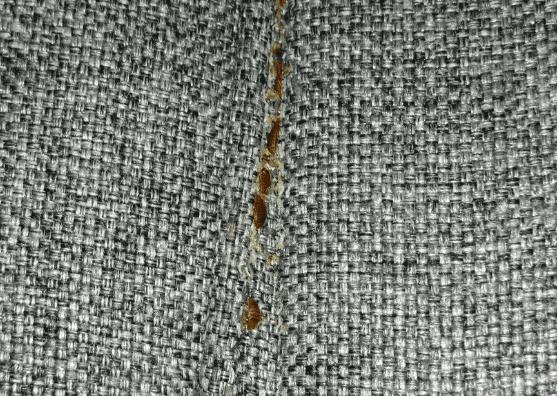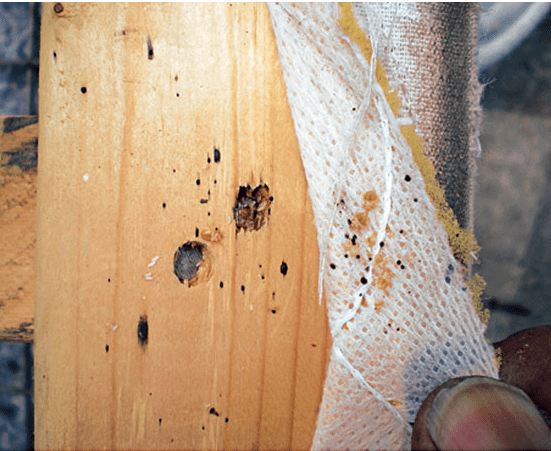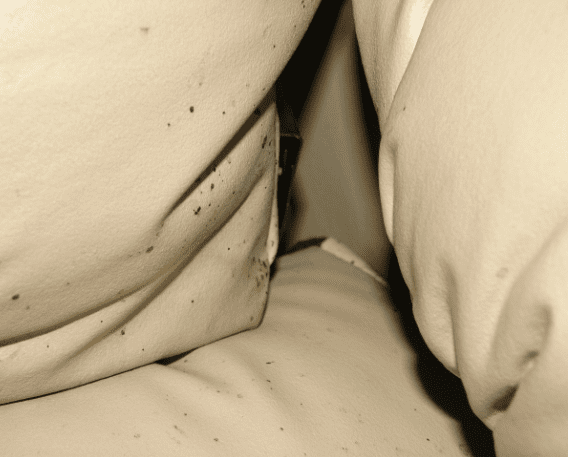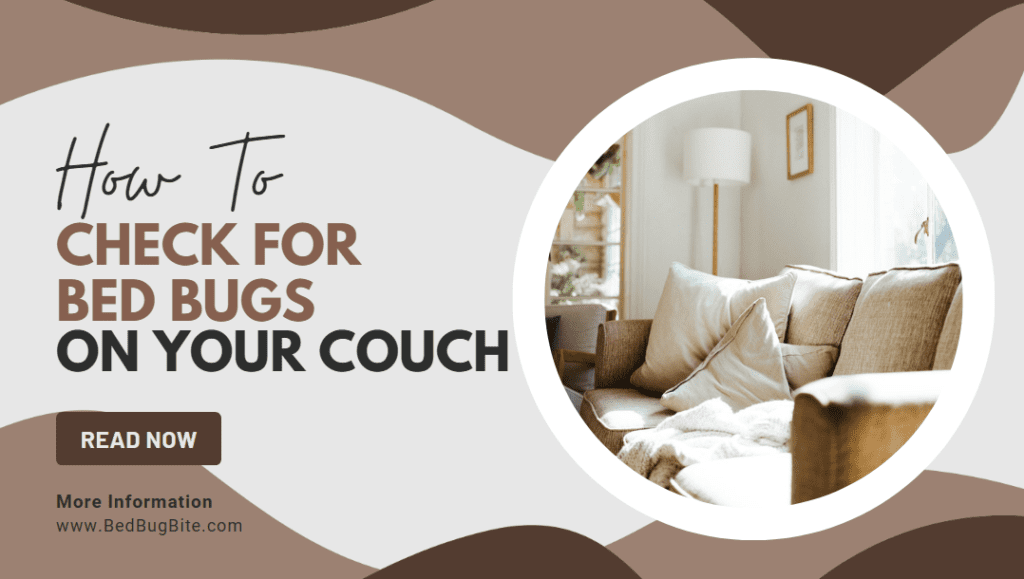Introduction
Are you frequently tossing and turning on your couch, plagued by the nagging feeling that something’s just not right? You’re not alone. As bed bug infestations continue to rise, couches have become one of their favorite hideouts. And trust us, these pests are not just a “bedroom issue.” Recognizing the importance of tackling this growing concern, we’ve crafted the ultimate guide on how to check for bed bugs in your couch. With decades of bed bug expertise behind this article, rest assured you’re in good hands. In the coming sections, we’ll unveil the biology and behavior of bed bugs, why they choose your couch as a dwelling place, and of course, a step-by-step guide to detecting them. So, let’s arm ourselves with knowledge and ensure that your living room remains a sanctuary, not a pest’s playground.
By diving into this comprehensive guide, you will empower yourself with actionable information derived from scientific research and expert insights. For instance, according to a study from the Journal of Medical Entomology, bed bugs are not just drawn to beds but have been increasingly found in seats and couches, becoming a growing concern for homeowners. By understanding how bed bugs operate, you can pinpoint their hiding spots and take effective steps to reclaim your space.
So, whether you’re a homeowner trying to protect your family, or a property manager concerned about the well-being of your tenants, you’ll find all the detailed guidance you need right here. Let’s get started.
The Biology and Behavior of Bed Bugs
Understanding the biology and behavior of bed bugs is the first crucial step in effective detection and elimination. These small, elusive insects are about the size of an apple seed and have a reddish-brown color. Although they can’t fly or jump, their flat, oval bodies enable them to hide in incredibly narrow spaces. They’re mainly nocturnal, preferring to come out at night to feed on human blood. The reason they are so difficult to detect lies in their ability to go without food for extended periods—up to a year in some cases.
Why Understanding Bed Bug Habits Helps in Effective Detection
The more you know about their feeding and hiding patterns, the easier it becomes to locate and eliminate them. According to the Centers for Disease Control and Prevention (CDC), bed bugs are especially active about an hour before dawn, but have been known to feed at other times when conditions are favorable. Knowing their active hours can significantly enhance your inspection and detection efforts.
Typical Signs of Bed Bug Infestations in Living Spaces
Just as every creature leaves a trace, so do bed bugs. One of the most common signs of an infestation is the presence of small, itchy bites on your skin. In your living spaces, look out for tiny black or brown fecal spots, as these are a clear indicator that bed bugs are present. Additionally, you may find shed exoskeletons or even see live bugs, although they are experts at evading detection.
In the battle against bed bugs, awareness of their biology and behavior is your greatest ally. It equips you with the ability to identify signs of an infestation early, increasing your odds of eliminating these pests effectively. Armed with this knowledge, you can now proceed to check the nooks and crannies of your couch with a keen eye. So, let’s delve into why your couch is a favored hideout for these pests.
Why the Couch Is a Common Hideout for Bed Bugs

Your couch might be your haven for relaxation after a long day, but unfortunately, it’s also a paradise for bed bugs. These pests are remarkably adaptable and have evolved to thrive in environments that are in close proximity to humans. In this section, we’ll uncover why your couch is such an appealing home for bed bugs and how this understanding can aid in effective detection and elimination.
Proximity to Humans
Bed bugs are obligate blood feeders; they depend on a blood meal to grow and reproduce. Your couch provides these pests with easy access to their primary food source: you. As confirmed by a study from the University of Florida, bed bugs are attracted to the carbon dioxide we exhale, the warmth we radiate, and even the scent of our skin. Knowing this can help you focus your inspection efforts in areas where human contact with the couch is most frequent.
Folds and Crevices as Ideal Hiding Spots
The intricate construction of your couch provides multiple hiding spots for bed bugs. They love the folds, seams, and crevices in the cushions and the framework. These areas offer them a dark and secure environment, making your couch an ideal sanctuary for them to lay eggs and multiply.
Food Source: Human Blood
Let’s face it; your couch isn’t just your relaxation spot but also a dining table for bed bugs. As you settle in to watch a movie or take a nap, they can easily emerge from their hiding spots to feed, usually without you even noticing.
By understanding why your couch is such an attractive residence for bed bugs, you’ll gain valuable insights into how to locate them. With this awareness, you can perform a more focused and effective inspection, taking one step closer to reclaiming your living space from these unwanted guests. Stay tuned as we delve into the tools, you’ll need to begin your inspection.
Tools You’ll Need to Check Your Couch for Bed Bugs
Before diving into your couch inspection, it’s essential to arm yourself with the right tools. Having the proper equipment will not only make your search more effective but also ensure that you can handle any bed bugs you find without risking further spread. Below, we lay out the essential toolkit that every bed bug detective should have at their disposal to check for bed bugs in your couch.
Flashlight
Visibility is crucial when inspecting for bed bugs. A high-powered flashlight can help you spot these elusive creatures, even in the darkest corners of your couch. LED flashlights are especially effective due to their bright, focused light.
White Cloth or Paper Towel
A white cloth or paper towel serves multiple purposes. You can use it to wipe areas you’re inspecting to pick up signs of bed bugs like fecal spots. The white background makes it easier to identify these dark spots.
Tweezers
Upon finding bed bugs or their eggs, you’ll need tweezers to remove them. Opt for a pair with a fine tip, which will allow you to grab even the smallest specimens effectively.
Magnifying Glass
Given the tiny size of bed bugs and their eggs, a magnifying glass can be an invaluable tool. It makes it easier to confirm that what you’re seeing is indeed a bed bug and not a speck of dirt.
Disposable Gloves
Handling bed bugs directly is not advisable. Disposable gloves offer a barrier of protection, ensuring you don’t come in direct contact with these pests.
Optional: DIY Bed Bug Trap
If you want to go the extra mile in your detection efforts, consider setting up a DIY bed bug trap. According to a guide by Rutgers University, a simple trap can be made using household items like sugar, yeast, and a small container. The trap emits carbon dioxide, mimicking human respiration, and attracting bed bugs toward it.
By arming yourself with these essential tools, you enhance your chances of conducting a successful, thorough couch inspection for bed bugs. As the saying goes, “the right tool for the right job,” and when it comes to detecting bed bugs, having the right toolkit is half the battle won. Up next, we’ll guide you through the actual inspection process, so you know exactly where to look.
Visual Inspection: Where to Look
Visual inspection is the cornerstone of any effective bed bug detection strategy. Knowing where to look is half the battle. In this section, we’ll guide you through the specific areas of your couch that are most likely to harbor bed bugs, along with telltale signs that can confirm their unwelcome presence. From seams and cushions to the frame and even surrounding areas, each zone requires your meticulous attention.
Checking Seams, Cushions, and Zippers
Seams, cushions, and zippers are common hiding spots for bed bugs. To conduct a thorough inspection, remove all cushions and carefully examine both sides. Use your flashlight to illuminate the seams and zippers, as these areas are notorious for housing bed bugs and their eggs.
Examining the Couch Frame and Legs

Don’t overlook the structure of your couch. Examine the frame carefully, using your flashlight to inspect any cracks, folds, or seams in the wood or metal. Check the legs of the couch as well; bed bugs can climb, so all vertical surfaces are potential hiding spots.
Importance of Inspecting Nearby Areas
Bed bugs are highly mobile pests. Therefore, it’s crucial to extend your visual inspection to areas surrounding the couch. This includes carpets, side tables, and even wall corners near the couch. Any adjacent fabrics like curtains or throw blankets should also be inspected.
Telltale Signs of Bed Bugs

As you conduct your visual inspection, keep an eye out for signs like tiny black or brown fecal spots, bloodstains, and shed exoskeletons. Finding these signs often indicates a bed bug infestation, even if you don’t see the bugs themselves.
By focusing on these specific areas and signs, your visual inspection will be much more effective in detecting any bed bug activity. In our next section, we will delve into an often-overlooked detection method: the sniff test. We’ll explore how your sense of smell can also serve as a tool in your bed bug detection arsenal.
The Sniff Test: Identifying Bed Bug Scent
Although visual clues are paramount in detecting bed bugs, your sense of smell can be a surprisingly effective tool in this endeavor. Bed bugs emit a distinct, musty odor, often likened to the smell of wet, moldy clothes or overripe raspberries. Understanding how to harness your olfactory senses in this context can add another layer to your bed bug detection methods. Let’s delve into how to effectively utilize the sniff test.
The Characteristic Smell of Bed Bugs
Bed bugs release pheromones that produce a distinct scent. This smell is particularly strong in large infestations and can sometimes even be detected during a casual walk-through of the infested area. However, it’s important not to solely rely on smell for detection, as other factors like mold and dampness can produce similar odors.
When and How to Use the Sniff Test Effectively
The best time to employ the sniff test is after you’ve conducted a thorough visual inspection. Should your visual inspection yield potential signs of bed bugs but no conclusive evidence, a follow-up sniff test can help confirm or rule out an infestation. Lean in close to the suspected areas and take a deep breath. If you detect the musty scent, it’s time to consider professional intervention.
Expert Tip: Combining Senses for Comprehensive Detection
Your senses of sight and smell can complement each other wonderfully in bed bug detection. Employing both methods increases the likelihood of discovering even the most well-hidden pests. According to a study by Rutgers University, combining multiple detection methods increases the overall effectiveness of your inspection.
By incorporating the sniff test into your inspection regimen, you add an extra layer of thoroughness to your search for bed bugs. With this multi-sensory approach, you stand a far better chance of keeping your living space bug-free. In the next section, we will discuss when it’s time to escalate the situation and seek professional help for bed bug detection.
Advanced Methods: Professional Bed Bug Detection
While DIY methods are invaluable for initial bed bug detection, there are situations that demand the expertise of professionals. Your peace of mind and the health of your household may necessitate investing in advanced, scientifically backed detection methods. This section will guide you through when to consult professionals, the benefits of doing so, and the types of advanced detection methods available.
When to Consult Professionals
If your visual and olfactory inspections point strongly toward a bed bug infestation, especially if it appears to be widespread, it’s advisable to consult professionals. A high level of infestation, as well as the recurrence of bed bugs despite DIY treatments, are indicators that you should seek expert help.
Cost Versus Benefit of Hiring Expert Help
The upfront cost of professional bed bug detection can be substantial, but consider it an investment in your long-term well-being. The advantage lies in the accuracy and comprehensiveness of professional methods. Missed spots in a DIY inspection can lead to a recurring problem, resulting in more stress and potentially higher costs in the long run.
Types of Professional Detection Methods
There are multiple avenues that professionals may use to detect bed bugs, each with its own set of advantages:
- Canine Detection: Specially trained dogs can sniff out bed bugs with incredible accuracy.
- Heat Maps: Advanced thermal imaging cameras can identify heat patterns, revealing clusters of bed bugs.
- DNA Testing: This involves collecting samples from your couch and surrounding areas for DNA testing to confirm the presence of bed bugs.
Further Reading: A study by the Entomological Society of America suggests that professional methods have a higher rate of detection compared to DIY methods.
By understanding the available advanced methods, you can make an informed choice about when and how to consult professionals. With the aid of expert detection, you can ensure that your living space becomes, and remains, free from bed bugs. In our final section, we will discuss the immediate steps you should take after detecting bed bugs and the options available for effective treatment.
How to Proceed After Detection
Once you’ve detected bed bugs, it’s crucial to take immediate and effective steps to manage the infestation. Whether you’ve discovered them through your own methods or verified their presence via professional help, action is imperative. In this section, we will guide you through the steps to isolate your couch and discuss your options for both DIY and professional treatments.
Immediate Steps to Isolate the Couch
Time is of the essence once bed bugs are identified. Immediate actions include:
- Quarantine the Area: Cordon off your couch to prevent bed bugs from spreading to other parts of the house.
- Bag and Dispose: Seal any infested cushions or detachable parts in plastic bags for disposal or treatment.
- Vacuum the Couch: Use a high-suction vacuum cleaner to suck up visible bed bugs and eggs, taking care to reach into crevices and folds.
Caution: Make sure to immediately empty the vacuum cleaner into a sealed plastic bag and dispose of it responsibly to prevent reinfestation.
Brief Introduction to Effective Bed Bug Treatments
Once you’ve isolated the couch, you can proceed with treatment. Options include:
- Chemical Treatments: Insecticides specifically designed for bed bugs can be applied carefully, following all safety guidelines.
- Heat Treatment: Professional services often offer heat treatments that raise the temperature of the affected area to levels lethal for bed bugs.
- Cold Treatment: Similarly, some experts use freezing methods to kill off bed bugs.
Consult a Professional or DIY: Making the Choice
The choice between tackling the issue yourself and hiring professionals will depend on the extent of the infestation and your comfort level with the treatment methods. If the infestation is large or if previous DIY methods have failed, professional intervention is highly recommended.
By following these guidelines, you take proactive steps to reclaim your home from bed bugs. Your awareness and prompt action are key to resolving this stressful issue. In conclusion, we’ll summarize the essential points for effectively checking your couch for bed bugs and guide you toward maintaining a bug-free living space.
Conclusion
You’ve now been equipped with a comprehensive guide that arms you with the knowledge and tools to effectively check your couch for bed bugs. From understanding the biology and habits of these pests to employing both DIY and professional methods, you have the means to tackle this issue head-on. Being vigilant and proactive can make a world of difference in maintaining a bug-free living environment.
Recap of Crucial Steps
1. Visual Inspection: Always start with a thorough visual check.
2. Use of Tools: Simple household items can be invaluable in your search.
3. Professional Help: Know when to escalate to expert-level detection and treatment.




